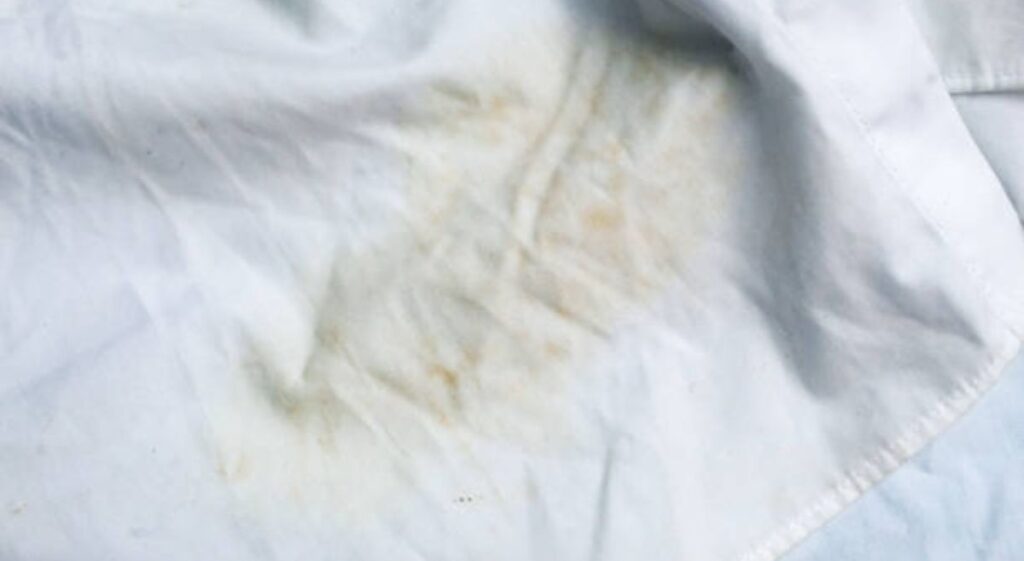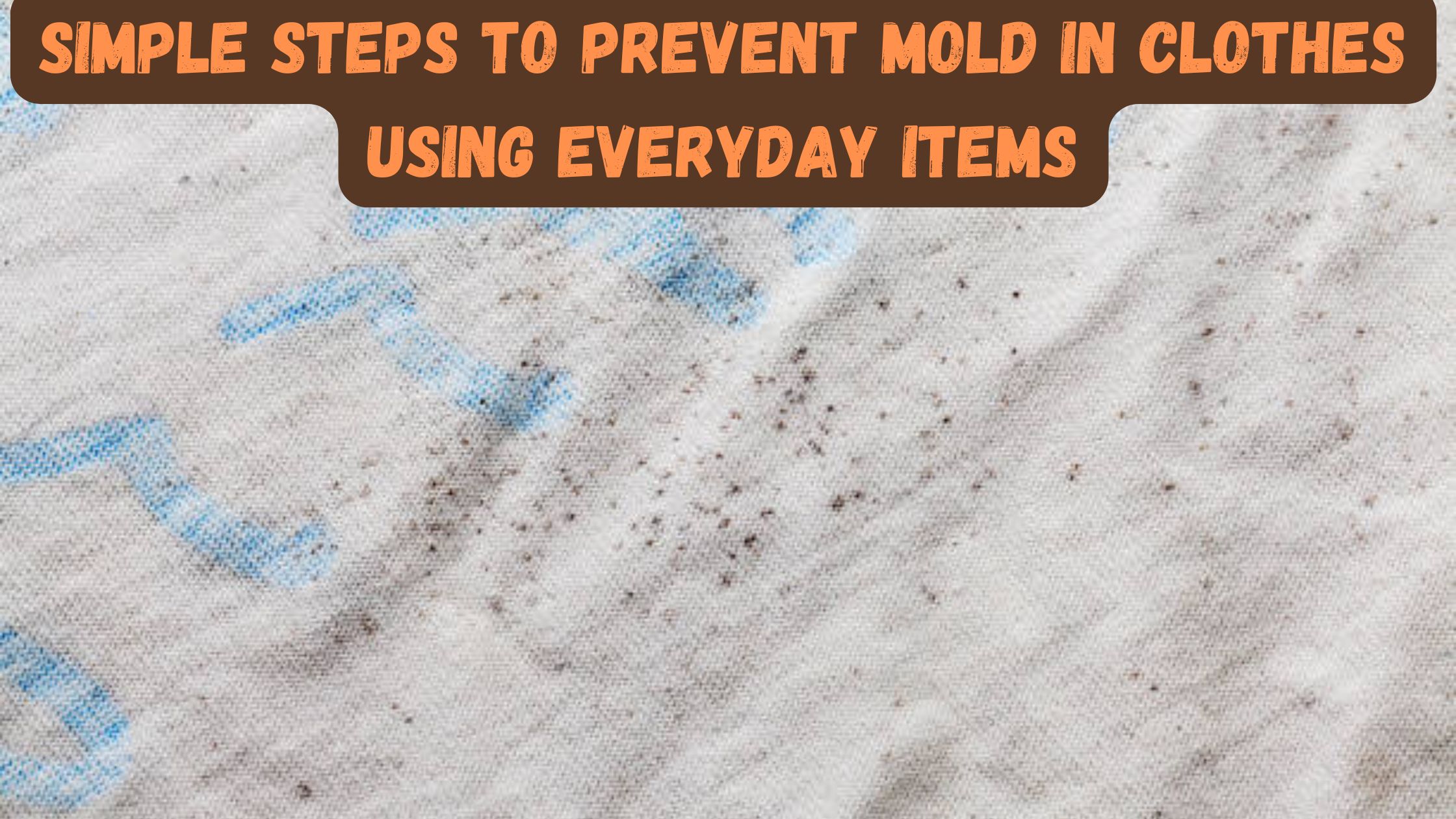Introduction:-
Simple Steps to Prevent Mold in Clothes Using Everyday Items

Mold in clothes is a common issue, especially in humid environments. Not only can it damage your garments, but it can also pose health risks. Fortunately, you don’t need to rely on expensive products to keep mold at bay. Here are some simple steps you can take to prevent mold from forming on your clothes using everyday items..
What are the best tips to keep clothes mold-free during the rainy season?
Simple Steps to Prevent Mold in Clothes
Keeping clothes mold-free during the rainy season can be challenging due to increased humidity. Here are some of the best tips to protect your clothes:
1. Keep Clothes Dry
- Immediate drying: Never leave wet or damp clothes in the laundry basket. Dry them as soon as possible after washing.
- Use a dryer or fan: If outdoor drying isn’t an option, use a dryer or place clothes under a fan to dry them thoroughly.
2. Proper Ventilation
- Air circulation: Ensure your wardrobe or closet is well-ventilated. Leave the doors slightly open to allow air to circulate.
- Use dehumidifiers: Place a dehumidifier in your closet or room to reduce moisture levels. Electric or moisture-absorbing packets can be effective.
3. Store Clothes Correctly
- Avoid overpacking: Don’t overcrowd your closet. Allow space between clothes to prevent moisture buildup.
- Use breathable storage: Store clothes in breathable fabric bags rather than plastic, which can trap moisture.
4. Use Moisture Absorbers
- Silica gel packets: Place silica gel packets or activated charcoal bags in your closet or drawers to absorb excess moisture.
- Baking soda or chalk: Keep an open box of baking soda or hang a bundle of chalk in your closet to absorb humidity.
5. Regularly Air Out Clothes
- Periodic airing: Take clothes out of the closet regularly, especially during sunny days, and let them air out to prevent moisture buildup.
- Sun exposure: If possible, hang clothes outside in direct sunlight to naturally kill mold spores.
6. Use Antifungal Essential Oils
- Tea tree or lavender oil: These essential oils have natural antifungal properties. Add a few drops to a spray bottle with water and lightly mist your clothes and closet.
7. Clean Your Closet Regularly
- Wipe down surfaces: Clean your closet regularly with a vinegar solution to remove any potential mold spores.
- Inspect for mold: Regularly check corners, shelves, and walls of your closet for signs of mold, and treat any spots immediately.
8. Wearable Rotation
- Rotate seasonal clothing: Avoid storing damp clothes for long periods. If you’re not wearing certain clothes, store them in a dry, well-ventilated place.
9. Use Cedar Wood
- Cedar hangers or blocks: Cedar has natural antifungal properties and can also repel insects. Use cedar wood in your closet or drawers.
10. Iron Clothes Before Storing
- Heat treatment: Ironing clothes before storing them can help eliminate any remaining moisture, reducing the risk of mold growth.
By implementing these tips, you can keep your clothes mold-free even during the humid and rainy season. Regular maintenance and preventive measures are key to protecting your wardrobe.
How can I remove mold from clothes that already have it?
To remove mold from clothes, follow these steps:

1. Take Safety Precautions:
- Wear protective gear: Use gloves and a mask to avoid inhaling mold spores.
- Do it outside: If possible, treat the clothes outdoors to prevent mold spores from spreading inside your home.
2. Brush Off Mold:
- Brush the fabric: Take the clothes outside and use a soft brush to remove as much mold as possible. Do this gently to avoid spreading spores.
3. Pre-treat the Mold Stains:
- Vinegar solution: Mix one part white vinegar with three parts water and spray it on the affected areas. Vinegar kills about 82% of mold species.
- Baking soda paste: Mix baking soda with water to form a paste and apply it to moldy spots. Let it sit for at least 30 minutes before washing.
4. Soak the Clothes:
- Soak in hot water: If the fabric can handle it, soak the clothes in hot water mixed with a cup of white vinegar for an hour. For delicate fabrics, use warm water.
- Add borax: For stubborn mold, add half a cup of borax to the soaking water.
5. Wash the Clothes:
- Use hot water: Wash the clothes in the hottest water safe for the fabric. Add a cup of white vinegar or half a cup of baking soda to the wash cycle for extra mold-killing power.
- Use a heavy-duty detergent: Choose a detergent with enzymes to help break down mold.
6. Dry Thoroughly:
- Sun-dry: If possible, dry the clothes in direct sunlight, which can help kill any remaining mold. The UV rays in sunlight have a natural disinfecting effect.
- Use a dryer: If sun-drying isn’t an option, use the dryer on a high heat setting to ensure the clothes are completely dry.
7. Inspect and Repeat if Necessary:
- Check for stains and odor: If any mold remains, repeat the washing process until it is completely gone.
8. Prevent Future Mold Growth:
- Store clothes in a dry place: Keep your clothes in a well-ventilated area to prevent moisture buildup.
- Use dehumidifiers or moisture absorbers: These can help control humidity levels in your closets.
By following these steps, you should be able to remove mold from clothes effectively and prevent it from coming back.
What household items can be used to stop mold growth on clothes?
To stop mold growth on clothes, you can use various household items that help absorb moisture, disinfect, and prevent mold from forming. Here are some effective options:

1. White Vinegar
- How it works: Vinegar is acidic and has natural antifungal properties.
- Usage: Mix one part vinegar with three parts water in a spray bottle and lightly mist your clothes. Let them air dry. You can also add a cup of vinegar to your washing machine during the rinse cycle to help prevent mold growth.
2. Baking Soda
- How it works: Baking soda is a natural deodorizer and moisture absorber.
- Usage: Place an open box of baking soda in your closet or storage area to absorb excess moisture. You can also sprinkle it directly on clothes that are prone to mold and let it sit before brushing off.
3. Activated Charcoal
- How it works: Activated charcoal is highly porous and excellent at absorbing moisture and odors.
- Usage: Place small bags of activated charcoal in your closet or drawer. You can buy ready-made charcoal bags or make your own using a breathable fabric.
4. Silica Gel Packets
- How it works: Silica gel absorbs moisture and reduces humidity.
- Usage: Place silica gel packets in your storage boxes, closets, or drawers. These are the small packets often found in shoe boxes or packaging.
5. Essential Oils (Tea Tree Oil or Lavender Oil)
- How it works: Essential oils like tea tree oil and lavender oil have natural antifungal and antimicrobial properties.
- Usage: Mix a few drops of tea tree oil or lavender oil with water in a spray bottle. Lightly mist your clothes and let them air dry. You can also add a few drops to a cloth and place it in your closet.
6. Chalk
- How it works: Chalk absorbs moisture and can help keep your storage area dry.
- Usage: Hang a bundle of chalk in your closet or place a few pieces in your drawers to prevent mold growth.
7. Salt
- How it works: Salt is hygroscopic, meaning it can absorb moisture from the air.
- Usage: Place bowls of salt in your closet or storage area. Replace the salt regularly as it will eventually become saturated with moisture.
8. Cedar Wood
- How it works: Cedar wood has natural antifungal properties and also repels insects.
- Usage: Use cedar hangers, blocks, or sachets in your closet to keep clothes dry and mold-free.
9. Lemon Juice
- How it works: Lemon juice is acidic and has natural antimicrobial properties.
- Usage: Mix lemon juice with water in a spray bottle and lightly mist your clothes. Allow them to air dry in a well-ventilated area.
10. Alcohol
- How it works: Rubbing alcohol can kill mold spores and prevent growth.
- Usage: Mix one part rubbing alcohol with one part water in a spray bottle and mist your clothes. Let them air dry completely.
Using these household items regularly can help you maintain a mold-free environment for your clothes, especially in areas prone to humidity.
Conclusion
Preventing mold in your clothes doesn’t require expensive products or complicated procedures. By using simple, everyday items like vinegar, baking soda, and essential oils, and by practicing proper drying and storage techniques, you can keep your clothes mold-free. Implement these tips into your routine to protect your garments and ensure they stay fresh and clean.
References
- Smith, J. (2023). Preventing Mold in Clothes: Practical Tips for Every Home. Home Care Magazine.
- Anderson, M. (2022). How to Air Dry Clothes in Humid Environments. The Laundry Guide.
- Green, L. (2021). The Power of White Vinegar in Laundry. Natural Home Living.
- Johnson, A. (2020). Natural Fabric Softeners: Vinegar and Beyond. Eco-Friendly Housekeeping.
- Miller, R. (2019). Baking Soda: Your Laundry’s Best Friend. Clean Living Journal.
- Thomas, E. (2021). Proper Storage Solutions to Prevent Mold in Clothing. Storage Solutions Quarterly.
- White, P. (2020). Using Silica Gel to Keep Your Clothes Dry and Mold-Free. Dry Home Tips.
- Black, C. (2023). Essential Oils and Their Antifungal Properties. Herbal Living Today.
- Davis, S. (2022). How to Use Essential Oils to Freshen Up Your Clothes. Aroma Therapy Basics.
- Foster, K. (2021). The Benefits of Sunlight for Clothes and Fabrics. Health and Home.
